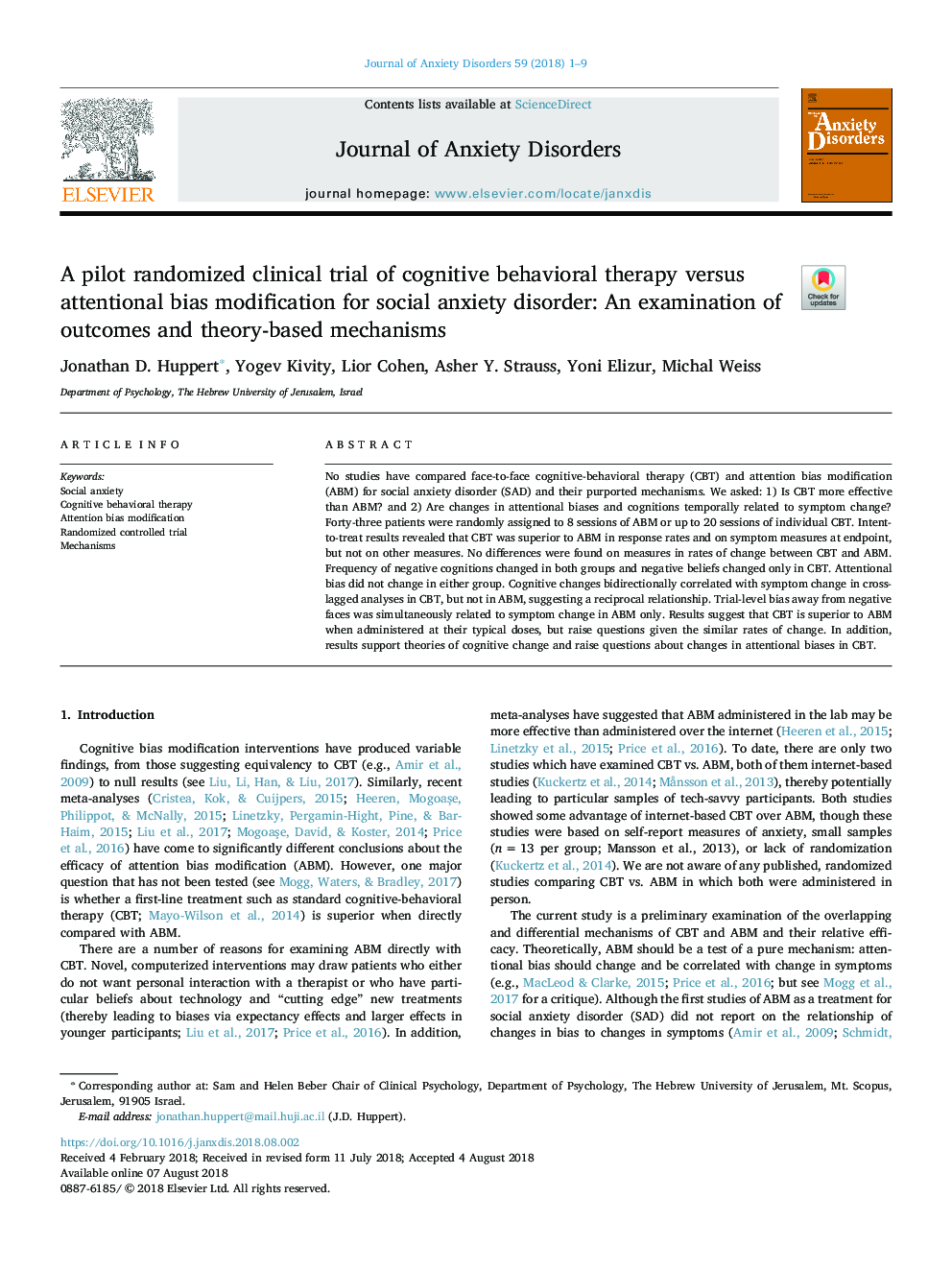| Article ID | Journal | Published Year | Pages | File Type |
|---|---|---|---|---|
| 7266805 | Journal of Anxiety Disorders | 2018 | 9 Pages |
Abstract
No studies have compared face-to-face cognitive-behavioral therapy (CBT) and attention bias modification (ABM) for social anxiety disorder (SAD) and their purported mechanisms. We asked: 1) Is CBT more effective than ABM? and 2) Are changes in attentional biases and cognitions temporally related to symptom change? Forty-three patients were randomly assigned to 8 sessions of ABM or up to 20 sessions of individual CBT. Intent-to-treat results revealed that CBT was superior to ABM in response rates and on symptom measures at endpoint, but not on other measures. No differences were found on measures in rates of change between CBT and ABM. Frequency of negative cognitions changed in both groups and negative beliefs changed only in CBT. Attentional bias did not change in either group. Cognitive changes bidirectionally correlated with symptom change in cross-lagged analyses in CBT, but not in ABM, suggesting a reciprocal relationship. Trial-level bias away from negative faces was simultaneously related to symptom change in ABM only. Results suggest that CBT is superior to ABM when administered at their typical doses, but raise questions given the similar rates of change. In addition, results support theories of cognitive change and raise questions about changes in attentional biases in CBT.
Keywords
Related Topics
Health Sciences
Medicine and Dentistry
Psychiatry and Mental Health
Authors
Jonathan D. Huppert, Yogev Kivity, Lior Cohen, Asher Y. Strauss, Yoni Elizur, Michal Weiss,
